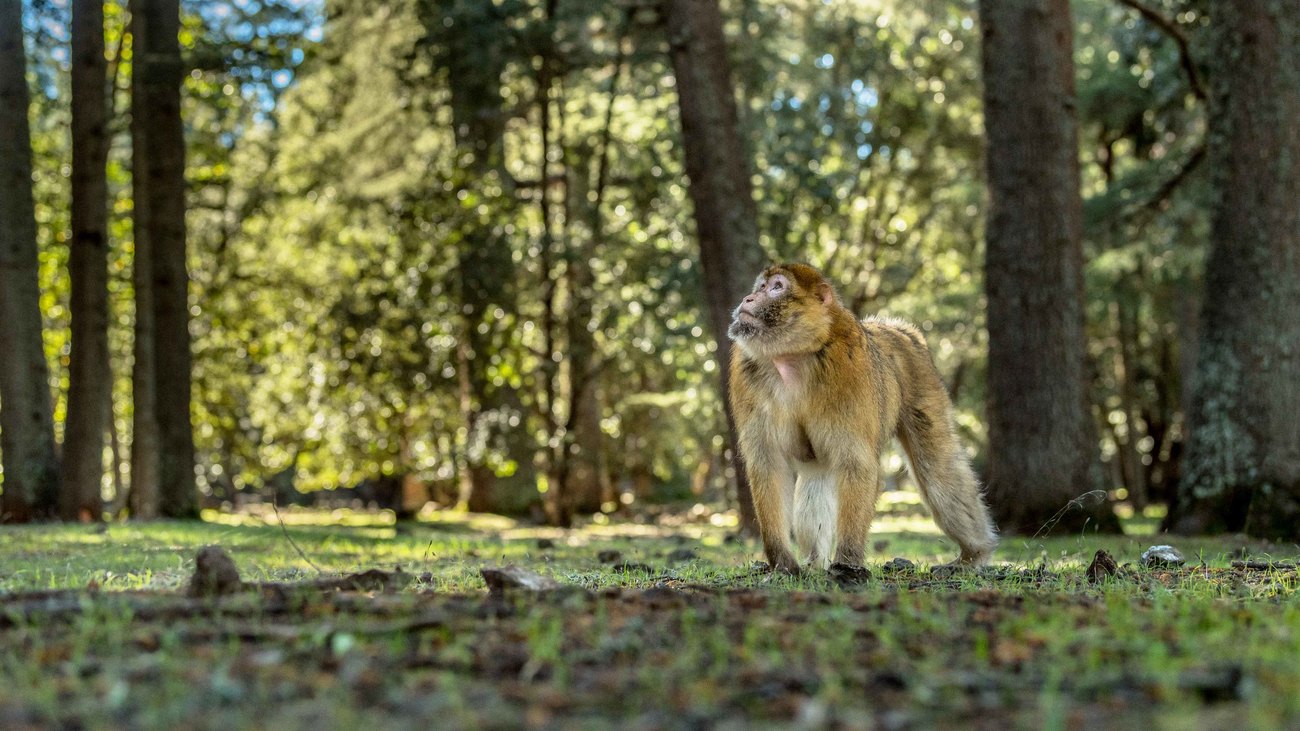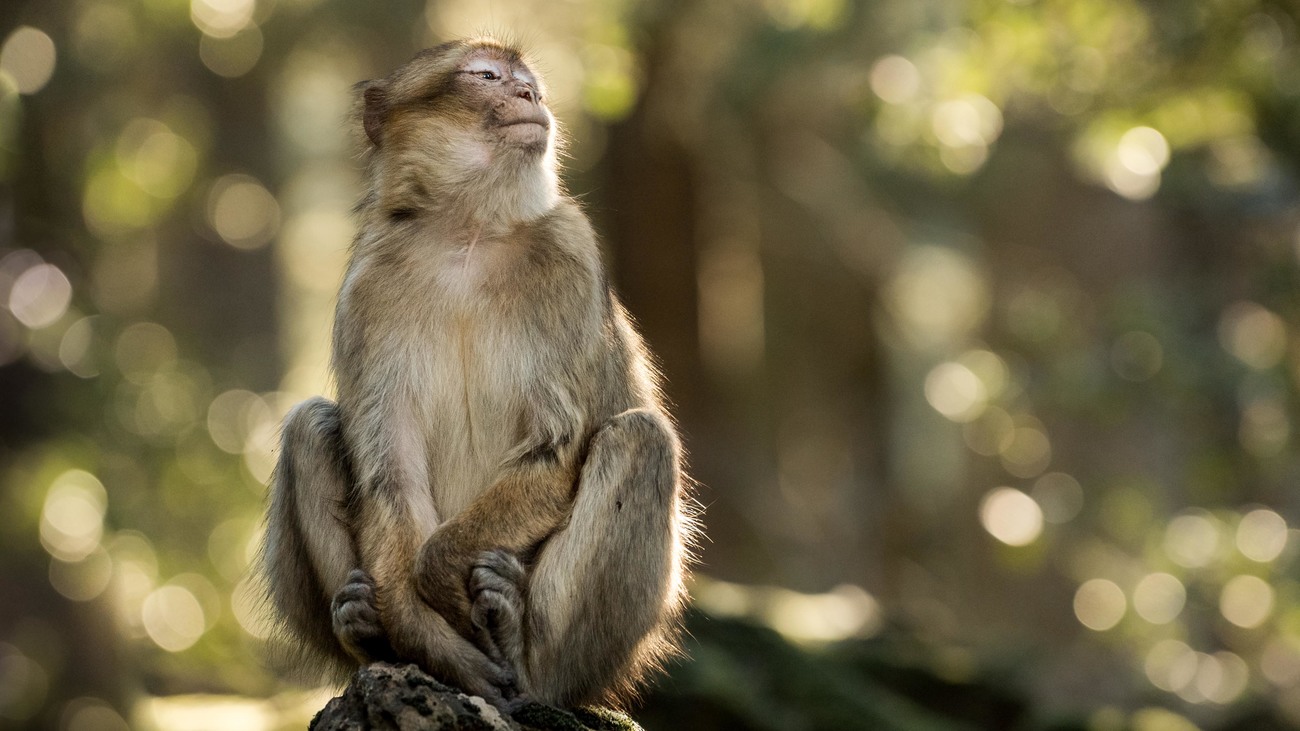Born to be Wild - Morocco
Saving Barbary macaques in one of their last remaining habitatsthe last hope for the Barbary macaque
the last hope for the Barbary macaque

The first time I saw a Barbary macaque was twenty years ago. It was a young male named Rizzly. I had never heard of the species before and in fact, had no idea that there were primates living in Northern Africa. Unfortunately, Rizzly was not in the cedar forests of Morocco, but at an animal shelter called Animal Advocacy and Protection (AAP) near the Dutch city Almere.
How Rizzly and many of his peers ended up at AAP was a question that kept me occupied for 20 years. First at my job at AAP, then as an independent wildlife conservationist, and finally as a wildlife conservation expert at IFAW. Dozens of times it brought me to the last stronghold of the wild Barbary macaque: the Atlas Mountains in Morocco.
This is a success story – but not one without its ups and downs.
Geographic distribution and traits
The Barbary macaque (scientific name Macaca sylvanus) is a so-called "Old World monkey". It is the only species of the genus Macaca living outside Asia and the only non-human primate north of the Sahara desert. For a macaque, it is a relatively peaceful species. They live in close-knit groups made up of different families and the males contribute significantly to caring for the young. The Barbary macaque finds its home in the mountains of north-west Africa, with its icy, snowy winters and hot, dry summers. Historically the species’ habitat extended across all of North Africa. However, the species is now extinct in Egypt, Libya and Tunisia. In Algeria, a very small fragmented population remains in the north-west. The last hope for the species consists of a number of small groups living in the Atlas and Rif mountains of Morocco.
Rizzly's journey to healing
Rizzly was less than one year old when he was trapped by poachers, smuggled to Europe and sold to a man in Paris who was looking for an extraordinary pet. The consequences were horrific for all concerned. When Rizzly was about two years old, he started attacking visitors to the apartment of his owner in Paris, and some years later his owner as well. Rizzly was locked in a cage and in response to stress and loneliness, he started to severely bite and scratch himself. Out of desperation, Rizzly’s owner contacted Stichting AAP. Once there, Rizzly embarked on a difficult rehabilitation process. He was reunited with his own kind, and re-learned what it was to be a monkey. He is doing well now, but he will never be completely healed of his self-mutilating behavior. The trauma of his early life will always haunt him.

Combatting wildlife poaching
Unfortunately, Rizzly's story was not unusual. More Barbary macaques came to Stichting AAP than the shelter could handle, arriving in dozens from France, Belgium, Spain and the Netherlands. Where were all these monkeys suddenly coming from?
Upon investigation, we discovered that the monkeys were poached from the Atlas Mountains in Morocco. Ifrane National Park, near the town of Azrou, appeared to be popular among poachers. The government was not aware of the scale of the problem. Farmers mainly complained to them that the monkeys were a nuisance because they regularly plundered cherry trees. We initiated research to learn about the state of the population in the National Park and the extent of the illegal trade. The results showed the grim truth of the situation. As a result of the illegal trade, there were alarmingly few young animals in the wild groups. The government and communities in and around the National Park were also largely unaware of the vulnerable state of the species.
The fate of this magnificent and unique species was very close to my heart and we worked tirelessly on conducting more research, international, national and local awareness campaigns, lobbying, and battling poaching and illegal trade. It payed off. The Barbary macaque moved from 'vulnerable' to 'threatened' on IUCN's red list. A CITES Appendix I listing followed. An important development was for the Moroccan government to adjust its local and national policies. The government recognised the efforts required to better protect the species. More importantly still, local people had to get involved in the work, and to this end, a small team of community rangers was trained and deployed in the forest. We talked to local farmers, gave lessons at schools in the area and ensured that the poachers were aware that we and the government were present. And finally, a shift occurred.
Born to be Wild project
When AAP received a large fund from the Dutch Postcode Lottery to boost the protection of the Barbary macaque, it was time for IFAW to step in and support the work in Morocco. The Born to be Wild project was launched under the leadership of AAP. In recent years, the presence of community rangers in the forest has increased considerably and the cooperation with the government has been constructively expanded. Police, customs officials and forest managers have undergone training, and the awareness of visitors to the forests and school students in the region was boosted.
Twenty years of hard work and the impetus of the Born to be Wild project have yielded fantastic results. Poaching is very much reduced and recent research has shown that the groups of monkeys are now much larger and healthier. There are many more juveniles in the population, and that’s great news for the future of the species.
However, the Barbary macaques are not out of danger yet. The cedar forest is under pressure due to excessive use of natural resources and climate change. The poachers are lying low for now, but that doesn't mean we cease our vigilance. There is still much to be done. I am confident that the Moroccan government, supported by organizations such as AAP and IFAW, will be able to meet the challenges of the future, enabling the Barbary macaque to remain a special inhabitant of the Atlas Mountains.
-Rikkert Reijnen, Senior Advisor, Conservation
Related content
every problem has a solution, every solution needs support.
The problems we face are urgent, complicated, and resistant to change. Real solutions demand creativity, hard work, and involvement from people like you.